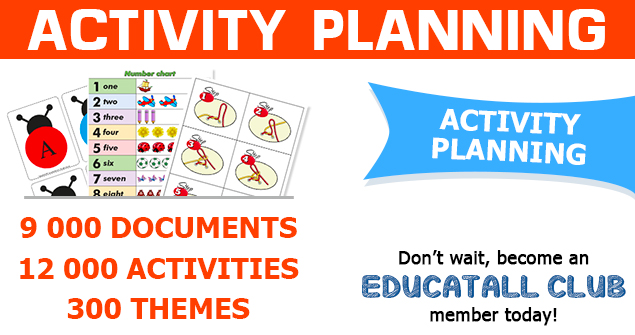The calendar, weather chart, and emotions corner
The calendar
Ideally presented like a monthly calendar and made attractive through the use of pictograms, the calendar makes it possible for children to prepare for various upcoming events. It can be used to announce birthdays, outings, special activities, etc.
The weather chart
Although it is not essential, presenting a weather chart can be interesting for children. This type of chart can simply be presented using various pictograms representing different meteorological phenomena that are added to your calendar. It can also be presented as a weather wheel or poster illustrating the most common symbols associated to weather.
During circle time, take two minutes to peek out a window with your group. This simple observation activity will make it possible for children to determine, among other things, if they will be playing outside or not during the day. If you choose to use meteorological pictograms on your calendar, children will enjoy begin able to compare the weather of the last few days and coming to certain conclusions with your help (it has been raining for three days, there were more clouds yesterday, etc.).
Weather is an important part of daily conversations. By attracting children's attention to the weather each day, they will be able to participate in adult conversations and better understand a weather report seen on television or heard on the radio.
The emotions corner
Children experience many different emotions on a daily basis. For this reason, helping them better understand their feelings and reactions as well as the impact their various emotions have on them and those that surround them is important. Pictograms are a great way to accomplish this. Obviously, there are many ways to help children learn about emotions. However, the use of pictograms remains the method chosen by many early childhood educators.
Displaying the entire range of emotions from the start is unnecessary. This would only confuse children. Instead, work on the main emotions to begin with (happy, sad, angry) and display them in a specific area within your daycare. At first, whenever a child experiences one of these emotions, invite him/her to identify it on the posters. Before long, children will begin to refer to the posters and pictograms on their own. Once children master the basic emotions, add to them progressively and as needed.
Circle time discussions also represent an excellent opportunity to support children in the exploration of their emotions. Having them talk about various situations will help them understand the concept.
Caroline Allard
Educatall.com is not responsible for the content of this article. The information mentioned in this article is the responsibility of the author. Educatall.com shall not be held responsible for any litigation or issues resulting from this article.

 Home
Home Theme activities
Theme activities
 Babies and toddlers
Babies and toddlers
 Arts and crafts
Arts and crafts
 Science
Science
 Creative recipes
Creative recipes
 Tips and tricks
Tips and tricks
 Special needs
Special needs
 Extra activities
Extra activities
 Educ-TV
Educ-TV
 Newsletter
Newsletter  Online store
Online store Educatall club
Educatall club

